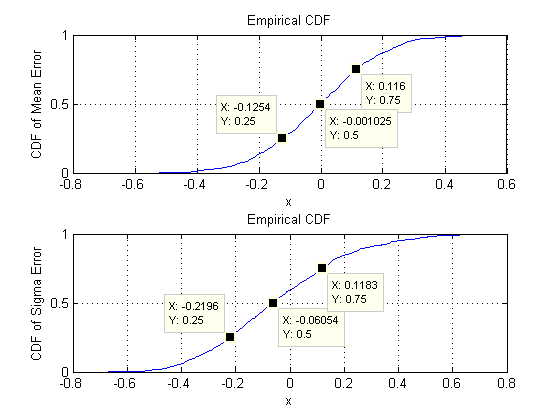Some brief numerics gives the following error distributions for the fit of 30 samples created from a standard normal distribution then fit to a univariate Gaussian.

The quartiles are indicated. It is assumed that this level of variation is desired in the multi-dimensional case.
I don't have the time to beat up MatLab to get the total result, so I will share my "rule of thumb". The 30 is provided as a rule of thumb, or heuristic so it is assumed that heuristics are not unacceptable.
My heuristic is to use Pascals triangle multiplied by the univariate case.

If I am using 2d data then I go to the 2nd row and sum it to get 2x the number of samples, or 60 samples. For 3d data I go to the 3rd row and sum it to get 4x the number of samples or 120 samples. For 5d data I go to the 5th row and sum it to get 16x the number of samples, or 480 samples.
Best of luck.
EDit:
It was intuitve, but everything has to be defended in math. I can't just take leaps from formulation of polynomial forms from Finite Elements with experience to get a ballpark.
The equation for the sum of that row of Pascals triangle is 2^k.
My idea for the approach here is to equate the AIC of a higher-dimensional distribution with more samples to a reduced dimensional distribution with fewer samples.
The Akaike Information Criteria (AIC) is defined as $ AIC = n log( \frac {RSS}{n}) + 2*k$ where $ RSS$ is residual sum of squares, $ n$ is sample count, and $ k$ is parameter count for the model.
$ AIC_1 := AIC_2$
$ n_1 log(\frac {RSS_1}{n_1}) +2k_1 = n_2 log(\frac {RSS_2}{n_2}) +2k_2$
For each dimension we eliminate the the mean loses a row and the covariance loses both a row and a column. $2 k_2 + 2= k_1$.
Assuming the error per sample point is constant relates the residual sum of squares to the sample count, and the term in the logarithm stays constant. The difference in sample count becomes a scaling constant.
some algebra yields:
$ n_2 - n_1 = (2 k_{lower} +4) \cdot A^{-1} $
The only assumption is that one case has fewer dimensions than the other and that the error is consistent over samples.
If we assume that for a univariate Gaussian the number of samples is 30 then we can start populating the table.

